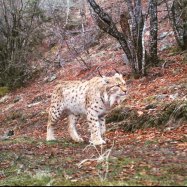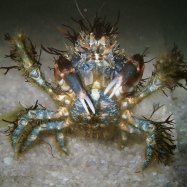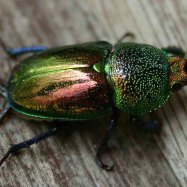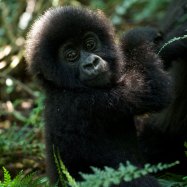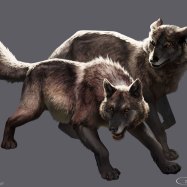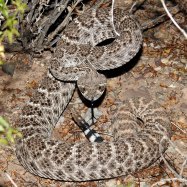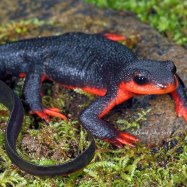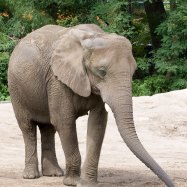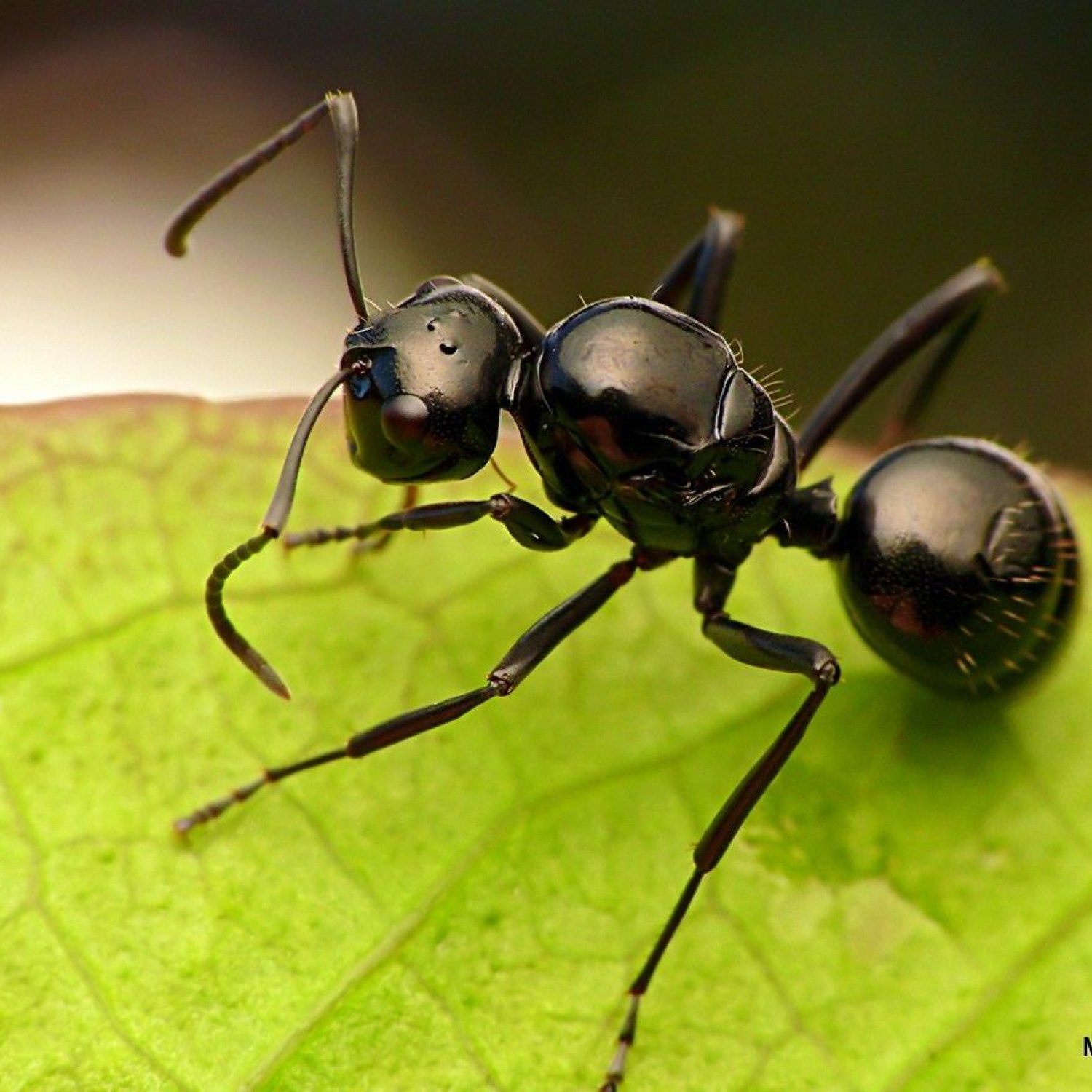
Ant
Ranges from 0.1 to 1.5 inches (2.5 to 38 millimeters), depending on the species
Ants are amazing insects that come in a variety of sizes and can be found all over the world. Ranging from 0.1 to 1.5 inches in length, they are known for their small and compact body shape, segmented body, and six legs. Belonging to the family Formicidae, ants are important pollinators and play a crucial role in our ecosystem. So next time you see one, appreciate these hardworking creatures!
Animal Details Summary:
Common Name: Ant
Kingdom: Animalia
Habitat: Varies, can be found in forests, grasslands, deserts, and urban areas
Ants: The Remarkable Insects That Rule the World
Ants. These small, hard-working insects may often go unnoticed, but they are found on every continent except Antarctica and make up almost 25% of the world’s animal biomass. With approximately 12,000 known species and an estimated one quadrillion individuals on Earth, ants are among the most successful creatures to ever walk the planet. From their incredible adaptability to their complex social structures, there is much to learn and admire about this remarkable insect Ant.Scientific Classification and Habitat of Ants
Ants belong to the scientific family Formicidae, also known as “ants”. They are part of the kingdom Animalia, the phylum Arthropoda, and the class Insecta. Within the order Hymenoptera, ants are closely related to bees and wasps. Formicidae is divided into 16 subfamilies, with the exact number of species still unknown.One of the most interesting features of ants is their wide range of habitats. Ants can be found in nearly every type of environment, from forests and grasslands to deserts and even urban areas. They thrive in all parts of the world, except for Antarctica, making them a truly global insect.
Their Role in the Ecosystem
Ants play a vital role in the ecosystem, contributing to both plant growth and insect control. As omnivores, ants have a varied diet, feeding on both plants and other insects Angora Goat. This makes them important pollinators and predators, helping to maintain the balance in the ecosystem.In addition, ants are also important decomposers, breaking down dead plant and animal matter, and recycling nutrients back into the soil. They also create aerated tunnels in the soil, which allows for better water and oxygen flow, benefiting plant growth.
Social Structure and Behavior
One of the defining characteristics of ants is their highly organized social structure. Ants are social insects and live in large colonies made up of thousands or even millions of individuals. Each colony consists of three types of ants: queens, males, and workers.The queen is the largest and longest-living ant in the colony, and her primary role is reproductive. She is responsible for laying eggs, which will develop into new members of the colony. The male ants' only function is to mate with the queen, after which they die.
Workers make up the majority of the colony and are responsible for all the daily tasks. These tasks include gathering food, taking care of the young, maintaining the nest, and protecting the colony. Workers also have specialized roles such as foraging, nest building, and defense.
Ants have the ability to communicate and cooperate with each other through the use of pheromones. Pheromones are chemical signals that allow ants to convey messages and coordinate their actions. This communication is crucial in maintaining the complex social structure of the colony.
Adaptability and Survival Skills
Ants are well-known for their remarkable adaptability and survival skills. Their small size and compact body shape allow them to fit into small spaces, making it easier to find food and shelter. Ants can also carry objects up to 20 times their own body weight, making them incredibly strong for their size.In times of danger, ants are quick to respond, and their coordinated actions can be seen in action. For example, when threatened by a predator, ants release a chemical signal, causing the other members of the colony to respond by attacking or retreating.
Another impressive survival skill of ants is their ability to create and maintain intricate underground nests. Depending on the species, these nests can consist of a series of chambers and tunnels, often with multiple entrances and exits. This allows them to escape predators, regulate temperature, and protect their young.
Size and Appearance
Ants come in a variety of sizes and appearances, with the largest reaching up to 1.5 inches (38 millimeters) in length. The smallest ants are only about 0.1 inches (2.5 millimeters) long. Their body shape consists of a head, thorax, and abdomen, which are all connected by a narrow waist. Ants have six legs, which are used for walking, digging, and carrying objects.Their coloration can vary depending on the species, but most ants are black, brown, or red. Some ants have a solid color, while others have multi-colored patterns or stripes. For example, Harpegnathos saltator, commonly known as the Jerdon's jumping ant, has yellow and black stripes on its abdomen.
Where Can You Find Ants?
As mentioned earlier, ants can be found all over the world, with the exception of Antarctica. The exact country of origin for ants is unknown, as they are widespread and can be found in various countries. In the United States, ants can be found throughout the entire country, with the most diverse species found in the southeastern states.The precise location of ants within their habitats can vary depending on the species. For example, some ants prefer to make their nests in soil, while others live in trees or even in other insects' nests.
The Connection Between Ants and Humans
Humans have a long history with ants, and it is safe to say that they have significantly impacted our daily lives. On the positive side, ants play a crucial role in controlling pests and improving soil fertility. Many species also serve as food sources for humans, such as honeypot ants that are a delicacy in some cultures.However, there are also negative aspects to the relationship between humans and ants. Some species of ants, like fire ants, are known for their aggressive behavior and can cause painful bites or allergic reactions. Others, like carpenter ants, can cause significant damage to wooden structures.
Ants and Natural Language Processing (NLP)
With their complex social structures, communication abilities, and adaptability, ants have been a subject of interest for researchers in various fields, including natural language processing (NLP). NLP is a branch of artificial intelligence that focuses on enabling computers to understand and process human language.Scientists have studied the complex pheromone communication of ants and have successfully developed algorithms based on their behavior to improve NLP systems. For example, the artificial intelligence company OpenAI has created a swarm intelligence algorithm based on ant colony behavior, with the aim of improving language processing.
The Marvels of Ants: A Constant Evolution
Despite their tiny size, ants have proven time and time again that they are a truly remarkable species. From their diverse habitats to their complex social structures, it is no wonder that humans have been captivated by these insects for centuries.As our understanding of ants and their role in the ecosystem continues to evolve, it is clear that these hard-working and resilient creatures have much to teach us about survival, communication, and cooperation. So, the next time you see a marching line of ants, take a moment to appreciate the incredible world of these captivating insects.

Ant
Animal Details Ant - Scientific Name: Formicidae
- Category: Animals A
- Scientific Name: Formicidae
- Common Name: Ant
- Kingdom: Animalia
- Phylum: Arthropoda
- Class: Insecta
- Order: Hymenoptera
- Family: Formicidae
- Habitat: Varies, can be found in forests, grasslands, deserts, and urban areas
- Feeding Method: Omnivorous, feeding on both plants and other insects
- Geographical Distribution: Found worldwide, except in Antarctica
- Country of Origin: No specific country of origin, as ants are found in many countries
- Location: Varies depending on the species
- Animal Coloration: Varies depending on the species, commonly black, brown, or red
- Body Shape: Small and compact with a segmented body and six legs
- Length: Ranges from 0.1 to 1.5 inches (2.5 to 38 millimeters), depending on the species
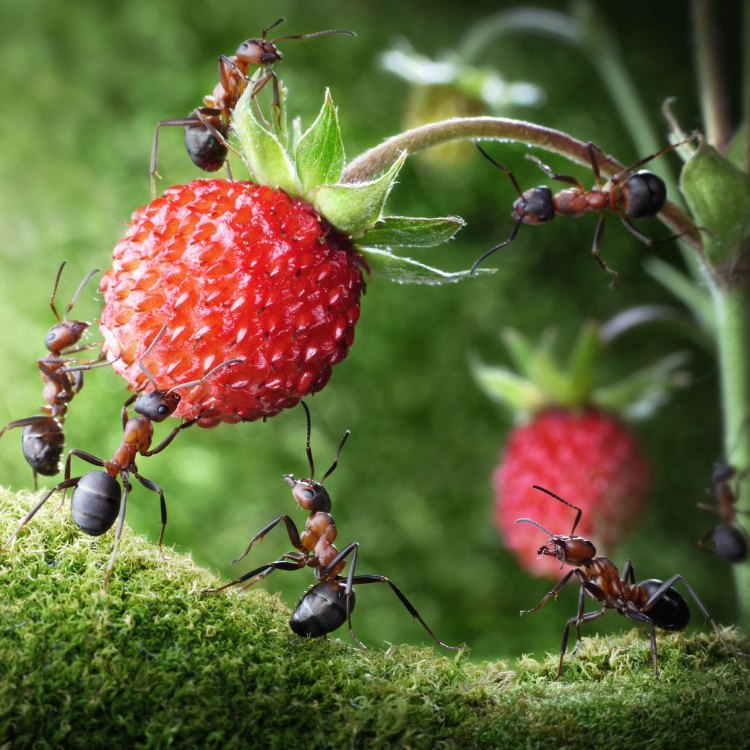
Ant
- Adult Size: Varies depending on the species, can range from tiny to large
- Average Lifespan: Ranges from a few weeks to several years, depending on the species
- Reproduction: Sexual reproduction
- Reproductive Behavior: Queens mate with males and store sperm to fertilize eggs throughout their lifetime
- Sound or Call: Ants communicate through pheromones and vibrations, rather than sound
- Migration Pattern: Some ant species engage in seasonal migrations
- Social Groups: Ants live in colonies with different castes, including queens, workers, and soldiers
- Behavior: Ants are highly organized and work together to gather food, build nests, and care for the colony
- Threats: Ants face threats from predation, habitat loss, pesticides, and climate change
- Conservation Status: No specific conservation status, as ants are not individually listed
- Impact on Ecosystem: Ants play important roles in ecosystems as decomposers, seed dispersers, and predators
- Human Use: Ants are used in scientific research and have been used as food in some cultures
- Distinctive Features: Distinctive features of ants include their segmented bodies, six legs, and specialized mouthparts
- Interesting Facts: Some interesting facts about ants are that they can carry objects many times their own body weight, some ants practice agriculture by growing fungus for food, and they have been living on Earth for millions of years
- Predator: Ants have predators such as birds, reptiles, amphibians, and other insects
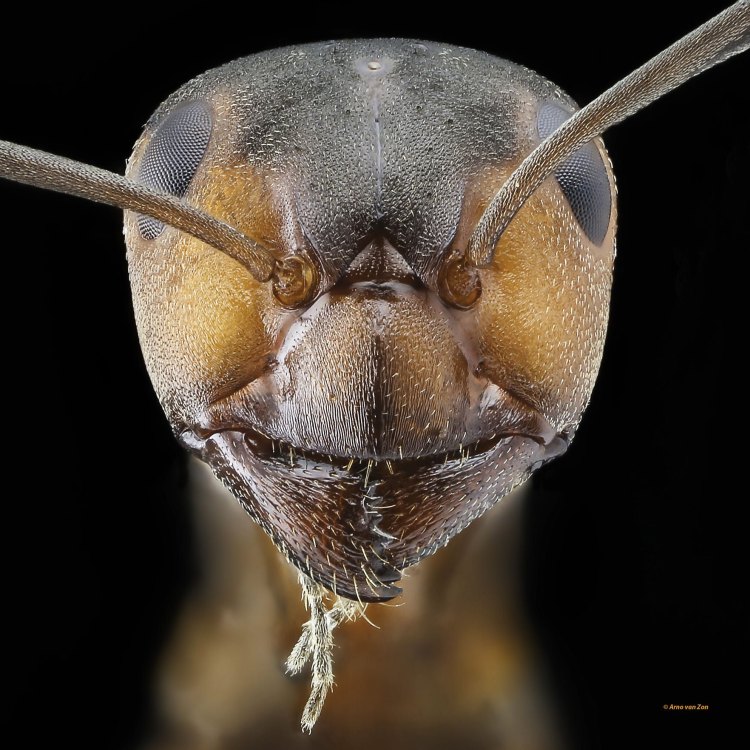
Formicidae
The Fascinating World of Ants: From Tiny Workers to Ecological Powerhouses
Ants are some of the most fascinating creatures found in our world, and for good reason. These tiny insects may seem insignificant at first glance, but they play crucial roles in ecosystems and have unique behaviors that have captured the attention of scientists and researchers for centuries.In this article, we will delve into the world of ants, exploring their various species, behaviors, and impact on the world around us.
The Size and Lifespan of Ants
The size of ants can vary greatly depending on the species PeaceOfAnimals.Com. Some ants, like the Pharaoh ant, can only grow up to 2mm in length, while others, like the Giant Forest ant, can reach lengths of up to 3cm. This range in size is due to the diverse habitats that ants can be found in, from rainforests to deserts.Similarly, the lifespan of ants also varies depending on the species. Some may only live for a few weeks, while others can survive for several years. The queen ants, however, have the longest lifespan as they can live for up to 30 years, constantly laying eggs to maintain and expand their colonies.
Reproduction and Social Behavior
Ants reproduce through sexual reproduction, with the majority of species having both male and female individuals. The most common form of mating in ants is when the queen ant mates with male ants. After mating, the queen stores the sperm in a specialized organ called the spermatheca, allowing her to fertilize eggs throughout her lifetime without the need for further matings.What sets ants apart from other insects is their highly complex social behavior American Eel. Ants live in colonies, with each colony consisting of individuals with different roles or castes. The queen ant is responsible for laying eggs, while the workers, which are all female, take on tasks such as foraging for food, building and maintaining the nest, and caring for the colony.
Some species of ants also have soldiers, which are specially adapted to defend the colony against predators. These soldiers have larger and stronger mandibles, making them better equipped to protect the colony.
Communication and Migration Patterns
Ants have developed unique ways of communicating with each other. Instead of using sound or calls, ants use pheromones and vibrations to convey information, such as the location of food or potential threats.Interestingly, some ant species also engage in seasonal migrations, where the entire colony moves to a new location, typically in search of better resources. These migrations can take place over long distances and involve thousands of ants working together to ensure the survival of their colony.
Threats to Ants and Their Conservation Status
Like all living creatures, ants face threats in their natural habitats. Predation is one of the main threats to ants, with birds, reptiles, amphibians, and other insects preying on them. Habitat loss, often caused by human activities such as deforestation, also poses a significant threat to ants, as they rely on a stable environment to build their nests and forage for food.Pesticides and climate change also have a significant impact on ants. Pesticides can harm or kill ants, and climate change can disrupt their natural behaviors and lifecycles. However, due to the vast number of ant species, the overall conservation status is not listed. Instead, individual species that face significant threats may be listed as endangered.
The Impact of Ants on Ecosystems
Despite their small size, ants play important roles in ecosystems. They are decomposers, breaking down organic matter and returning nutrients to the soil. Some species also help in seed dispersal, playing a crucial role in the growth and diversity of plant populations.Moreover, ants are essential predators, controlling the population of other insects and keeping ecosystems in balance. They also create underground tunnels that help aerate and improve soil quality, making it suitable for other plants and animals.
Human Use of Ants
Aside from their ecological significance, ants have also been used by humans for various purposes. Ants are commonly used in scientific research, from studying social behavior to finding potential cures for diseases. Some cultures also incorporate ants into their diet as a source of protein.The Distinctive Features of Ants and Interesting Facts
One of the most distinctive features of ants is their segmented bodies, made up of three parts: the head, thorax, and abdomen. They also have six legs and specialized mouthparts that allow them to eat a variety of foods, including insects, nectar, and other plant materials.But besides their physical characteristics, ants also have several interesting facts that make them truly unique. For example, ants can carry objects many times their own body weight, with some species being able to lift up to 100 times their weight. Additionally, some ants practice agriculture by growing fungus for food, making them one of the few insects to engage in farming-like activities. Lastly, ants have been roaming the Earth for millions of years, with fossil records dating back to the Cretaceous period.
In Conclusion
Ants are indeed remarkable creatures, with their complex social behaviors, diverse species, and crucial roles in ecosystems. As we continue to learn more about these fascinating insects, we gain a deeper understanding of the interconnectedness of all living things on this planet. Ants may be small, but their impact on the world around us is significant, making them a vital part of our natural world that deserves our fascination and protection.
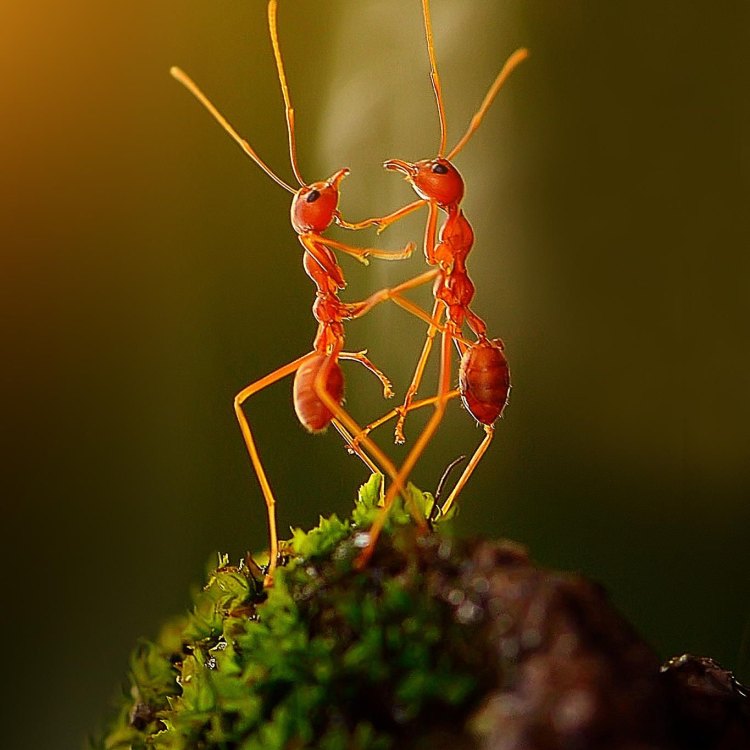
Ants: The Remarkable Insects That Rule the World
Disclaimer: The content provided is for informational purposes only. We cannot guarantee the accuracy of the information on this page 100%. All information provided here may change without prior notice.

